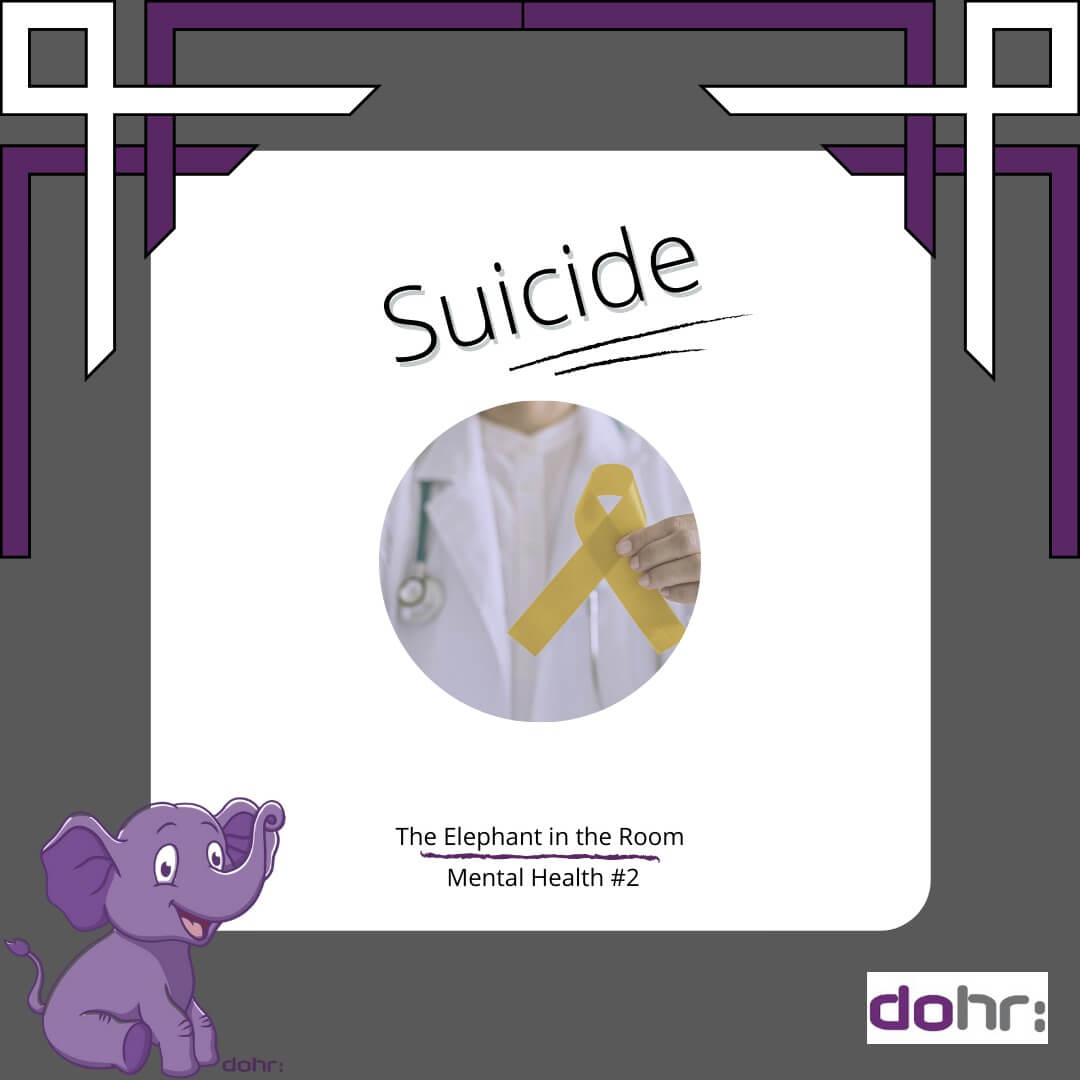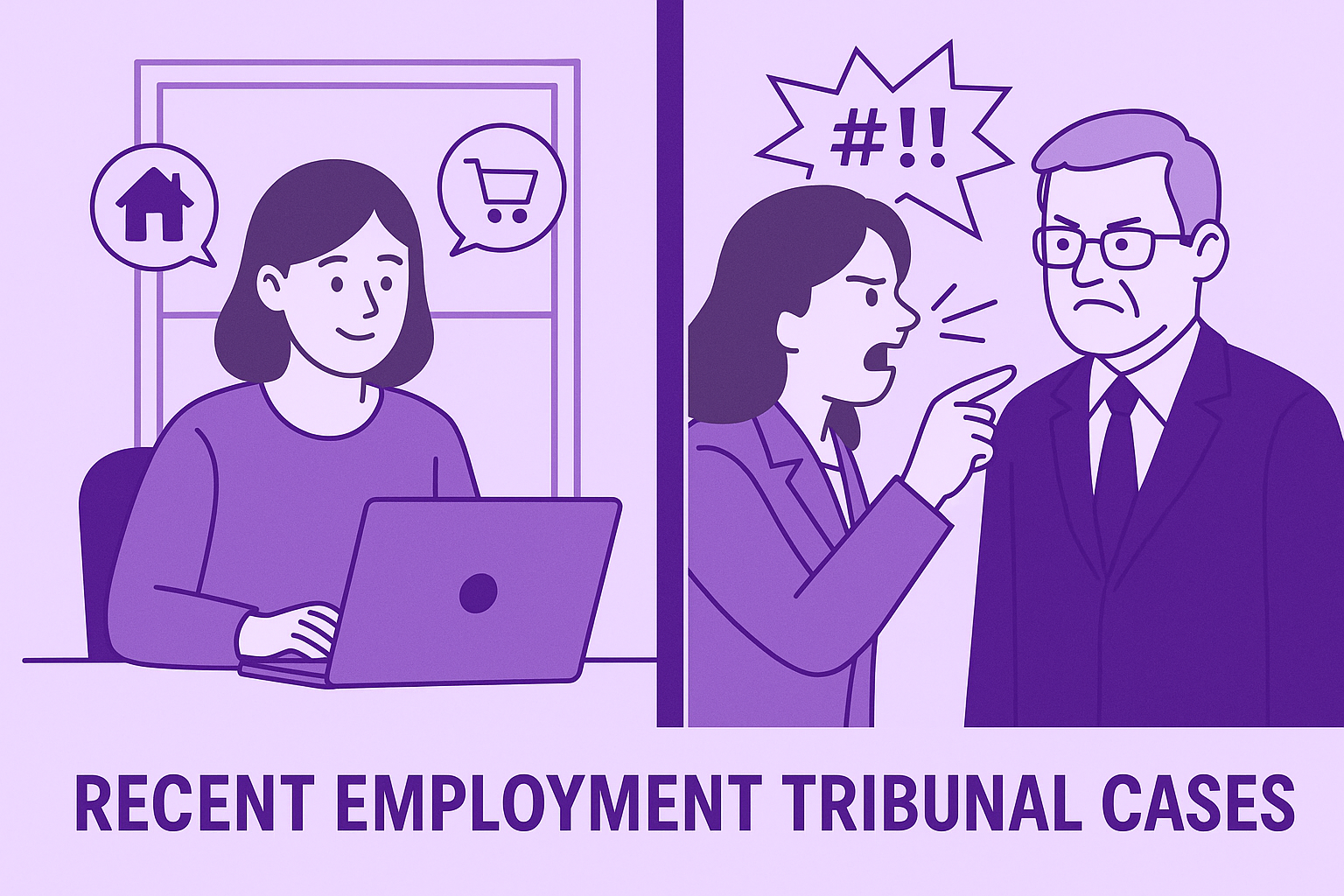Suicide, Safety & Accountability:
Why Employers Must Pay Attention
At DOHR, we believe that mental health should be treated with the same seriousness and structure as any other workplace risk. All our HR Advisors are trained Mental Health First Aiders, and we are acutely aware of how the conversation around mental health is evolving, but also aware that it remains The Elephant in the Room.
One area that remains painfully under-discussed is suicide. Despite the progress made in bringing mental health into the workplace conversation, suicide is still considered taboo. Yet, it’s a topic that demands attention — not just from HR professionals, but from boardrooms and leadership teams across all sectors.
During my working career, I have dealt with both the aftermath of employees who have taken their own lives and with the fear felt by employers when an employee threatens to take their own life.
A recent and significant corporate manslaughter case has brought this issue into sharp focus. The case involved allegations that hospital staff failed to remove high-risk objects that had previously been flagged as a risk — and were ultimately used in a suicide. While rare, the fact that this case resulted in a criminal prosecution should make every employer think twice.
Currently, suicides are not reportable under RIDDOR, and the Health and Safety Executive (HSE) is not set up to investigate breaches in health and safety in relation to well-being. But the involvement of the Crown Prosecution Service in pursuing a corporate manslaughter claim signals a shift — one that places a greater burden of accountability on employers.
Work-related stress, depression, and anxiety continue to have a profound impact on UK workplaces. HSE and Labour Force Survey data shows 16.4 million working days were lost to these issues in 2023/24 alone. The broader cost to UK employers for ill-health and non-fatal injuries? An eye-watering £51 billion a year.
This is not just a health and safety issue — it’s a business issue. And increasingly, regulators are taking notice.
A New Focus on Psychosocial Hazards
The HSE’s 10-year strategy, Protecting People and Places, confirms a growing commitment to tackling work-related mental ill-health and stress. In December 2024, the HSE launched a new campaign focused on stress and wellbeing. At the same time, the British Standards Institution is working on a draft suicide prevention standard.
The conversation is changing — fast.
Historically, safety risk has been seen as the preserve of high-risk sectors: manufacturing, construction, logistics. But what about back-office and professional services staff? These employees are often seen as ‘low risk’ — but this can create a false sense of security and may obscure the reality: psychosocial hazards such as overwork, burnout, isolation, bullying, or a toxic culture can be just as dangerous, albeit in less visible ways. In addition, non-work pressures may be building and if someone struggles to manage their mental health and wellbeing at home and these struggles overflow into the workplace and start to impact their work, then the mix can be overwhelming and coping mechanisms fail to protect the the individual employees.
From Reactive to Proactive: What Employers Must Do
Far too often, organisations wait until it’s too late — responding only after a crisis or tragedy. In the worst cases, blame is directed at the employee, rather than acknowledging systemic failures in policy, culture or oversight.
Where organisations have become accustomed to managing physical risks through robust safety management systems, including risk assessments, the same structured approach is needed for mental health. Psychosocial risks are harder to quantify, but no less real, no less urgent and no less impactful.
The recent court case is a warning signal. If there is any perception that an employer’s failings contributed to a death, there could be serious legal, financial and reputational consequences. Business owners and leaders must take note: this is not an HR issue. It is a business obligation.
Psychological safety — where individuals feel safe to speak up without fear of blame or reprisal — is central to a mentally healthy workplace. It fosters trust, collaboration, and innovation. It also acts as a buffer against deeper harm.
What Now?
While we did not see any specific mention of mental health reform in the Employment Rights Act, it would be unwise to assume that the status quo will hold. Public expectation, regulatory attention, and legal precedent are shifting. Employers must be prepared.
Just as there is an obligation on employers to ensure a safe and healthy physical working environment, there is equally an obligation to ensure a psychologically safe and healthy working environment; and this extends to everywhere that employees are as a result of their employment, including after work events, off site events and working from home.
Our advice:
Don’t ignore the issue: Review how suicide, stress and mental health are addressed in your current risk management processes.
Build competence: Make sure those leading on mental health strategy have the appropriate training and experience — including the ability to conduct or commission suicide risk assessments where appropriate.
Start from the top: Senior leaders need to be informed and engaged, with a clear understanding of the regulatory and reputational risks.
Benchmark against best practice: Don’t just aim for compliance — aim for excellence.
The bottom line? This is about people — and people are your business. The financial cost of inaction is staggering, but the human cost is incalculable.
If you’re not sure where to start, we can help. At DOHR, we bring together HR expertise and mental health awareness to guide organisations in building safer, healthier workplaces. It’s time to take mental health off the ‘nice to have’ list — and put it firmly on the boardroom agenda. If you don’t, the police might just do it for you!


